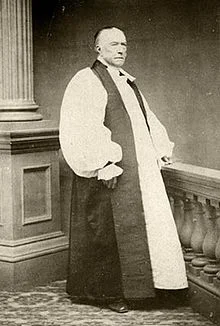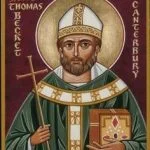Well, my friends, the season of spring is upon us. But not the spring you imagine. Certainly the weather outside makes that clear. No, I speak of another spring: the springtime of faith, the season of Lent. A season for spiritual renewal, a time for pruning the weeds that strap our soul, a time to clean the cobwebs that cloud our vision of the Good, the True, and the Beautiful.
Our season of Lent has its origins in the early Church when persons preparing for Baptism at Easter would be instructed in the faith and made ready for the great Easter feast. Through study, prayer, and penitential acts, the candidates would renounce their former ways so as to embrace the way of Christ. Over time, the preparation for Easter included all members and involved acts of penance.
Among those penitential acts was the practice of confession, a custom we continue to offer in our own time. Unlike our modern practice, Christians in the early Church made their confession publicly before the whole assembly of the church. They rightly understood that sin not only damaged our relationship with God, but with each other, the entire Body of Christ. It seems, however, that the public confession of sins loss its popularity — I wonder why — and took on a new form, that of individual confession with a priest.
Today, I am going to briefly return to that ancient practice. Fortunately for you, I am not going to call any of you forward to make your confession of sins before the congregation, but rather make a confession of a sin of which I am guilty: I depend too much on myself and don’t always trust God. While some of you might have hoped for a more provocative confession, you will be sorely disappointed. But hear me out for a moment.
Although my sin may seem mundane to you, it is one that I am profoundly aware of its dangers. If left unchecked, the deception that I can rely on myself can lead me to commit a greater sin, the sin of pride — the very sin that has brought humanity to its knees and left countless generations wounded. It is the sin of which the authors of the Book of Genesis were profoundly aware of its deadly venom. Thus their tale of the archetypal humans’ fall from grace, Adam and Eve. While not meant to be an account of a historical act, the temptation in the Garden of Eden painfully reminds us of our weakness, the fundamental brokenness that we experience and from which we can only be redeemed by God’s grace.
My often lack of trust in God manifests itself in subtle ways. At times, it is expressed in my anxiety about the future and my erroneous belief that somehow I can control what is to come, only to discover God’s plans are often greater than mine. Other times, I find myself filled with worry about even the smallest of things and I forget to entrust to God those matters for which I need his care. I can be easily deceived into thinking that I have all I need to accomplish all things. I often find that as soon as I fall into that trap, God makes a point of reminding me that there is nothing I can do, but simply entrust matters to his care.
I wonder, how often do we deceive ourselves into thinking we are more than what we are, much as Adam and Eve do in the story of Genesis. There we read that Adam and Eve ate of the fruit of the tree of knowledge believing that they would be like God and truly wise.
How often do we judge others as we believe God would judge them and condemn them for their acts? How often do we deceive ourselves into believing we know all things when words of gossip pass from our lips and shatter others’ lives? How often do we try to control others, stubbornly believing we will get our way if only we try? When we judge others, condemn others with our words, and control others, we fall trap to the very sin of Adam and Eve and trust in ourselves and not in God.
These are the very weeds that we must prune from our souls and minds this Lent, this springtime of faith. Rather than partake of the fruit of the tree, we are called to embrace Christ and follow his way.
Unlike Adam and Eve, Jesus does not partake of the fruit of the tree, but bears the weight of the wood of the tree of life, the cross of our salvation. Rather than exalt himself, Jesus humbles himself and gives his life for the life of the world.
We read of Christ’s humility and total trust in his Father in our Gospel today. I have long wondered why Jesus was tempted. The more I consider it, the more I realise Jesus had to experience what you and I experience each day so that he could reverse the sin of Adam and Eve, transform it, and redeem and save what was lost once so long ago.
Rather than depend on himself — as we are so often prone to do — Jesus gives himself entirely to his Father. Certainly Jesus could have changed rocks into bread, commanded his angels to save him from death, and declared himself king of all nations. Yet he does none of those things. Instead, he trusts his Father. As St. Paul says in our second reading from Romans, Jesus’ obedience to his Father’s will makes us righteous.
We must be likewise obedient to our heavenly Father. Our pruning hook is obedience, it is the tool by which we shall tear up the weeds of sin that weigh our soul down and prohibit us from flourishing in this springtime of faith. That is our task this Lent!
For many of us, the word obedience conjures up negative feelings and thoughts. We think of obedience as limiting our freedom. Yet obedience is nothing like that. Rather, as the Latin root of the word reveals, it means to listen and hearken. When we are obedient to God, we listen to God, and follow God’s will for us.
When we hearken to God’s call for us to be holy people, a priestly people, a people who live as he calls us to live, we discover a freedom beyond our imagination. We become what we are meant to be.
I am frequently reminded of this in my own life. When I abide by God’s command and live as he calls me to live, I experience a profound happiness. And God’s command is simple: love him with our whole heart, mind, and soul, and love our neighbours as ourselves.
It is when I deceive myself into thinking that I have all the answers, know all things, and act as such that I am most miserable. When we sin, a great weight is placed upon us. A burden far greater than what we can handle on our own. But when we renounce the way of darkness and turn to Christ and seek his grace, we experience true joy and freedom. God wants us to flourish.
God wants us to live in joy and happiness, love and peace. To get there, we need but be obedient to him, listen to him, to know our way.
How do we listen? By now, many of you might notice I place a tremendous emphasis on the importance of prayer in our life. I am a firm believer that it is by prayer, both personal and public, that we come to know God and the way we are to go in life. How do we expect to hear God if we do not set aside time each day to listen? Prayer is just that: placing ourselves before God, entrusting to God all our fears and anxieties, and inviting God to transform them by his grace.
To be clear, God may not answer our prayers as quickly as we may wish or even in the ways we want. That is not the point of prayer. Rather, we pray so as to invite God into our lives, into our suffering, our fears, our joys, hopes, and sorrows. With time, we will learn from God the way we are to go. Trust me, I wouldn’t be here were it not for long and dark nights of prayer over many years.
We listen as well when we read the scriptures and hear God’s Word spoken. Christ makes this clear in our Gospel today. Notice how he responds to each temptation with a quote from the scriptures. When we study the scriptures, we allow the Word to become our very breath, the life of our spirit.
Finally, we listen to God when we attend to God’s broken-hearted. When we give of ourselves to others, when we love our brothers and sisters, friends and strangers, we attend to God. We find the culmination of this on Maundy Thursday, at the very beginning of our Easter celebrations, when we kneel down before each other and wash each other’s feet and heed Christ’s command “to love one another as I have loved you.”
Therefore, my friends, our springtime of faith, our season of Lent, is a time for us obey God, to listen to his ways and place our trust and hope in him. Thus we make our lenten journey, our spring cleaning, through prayer, study of scriptures, and service of each other. How will you make your lenten journey?












